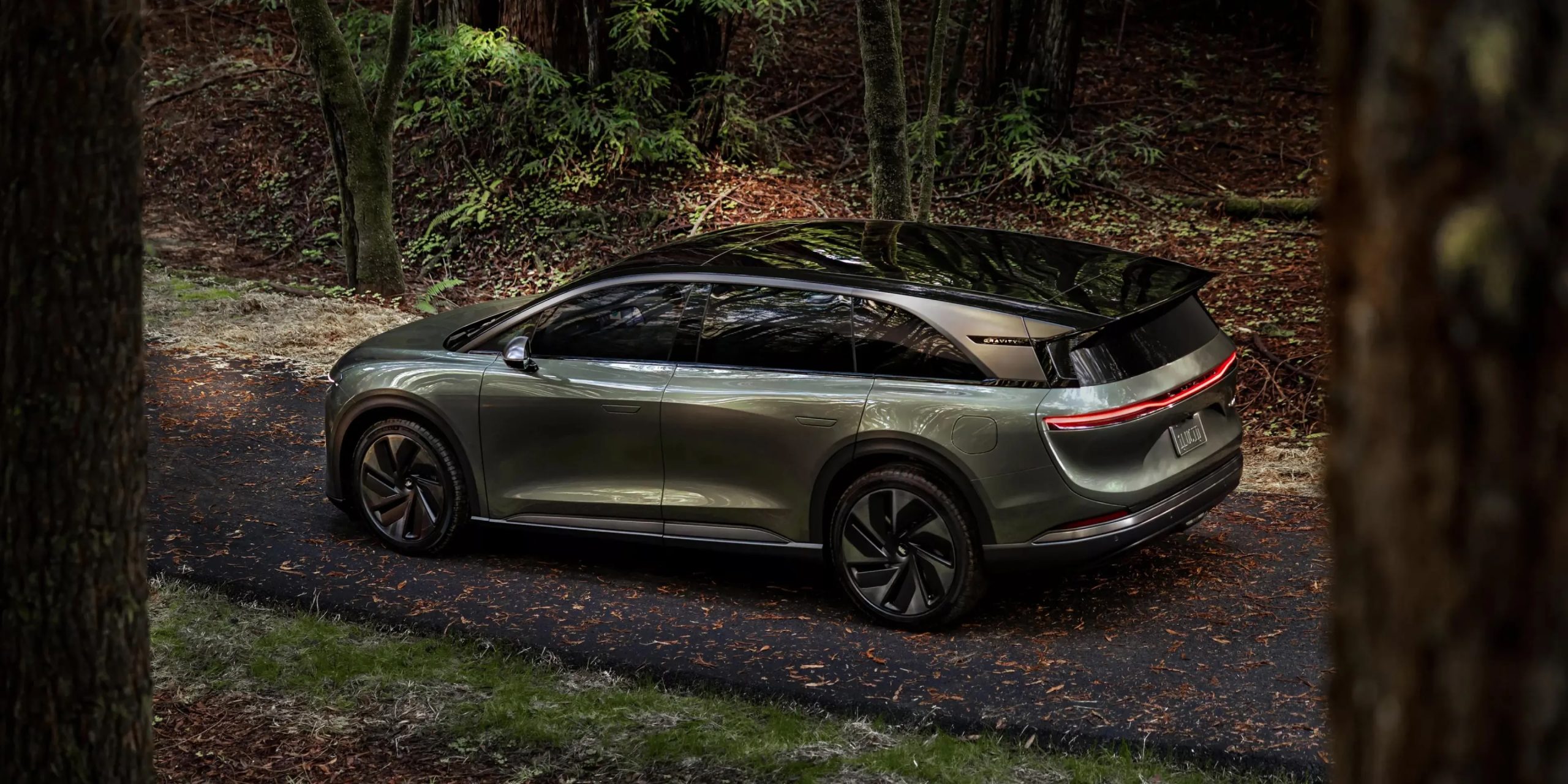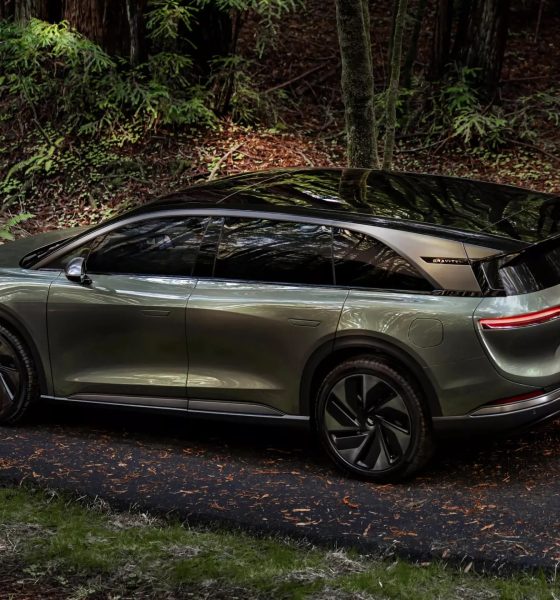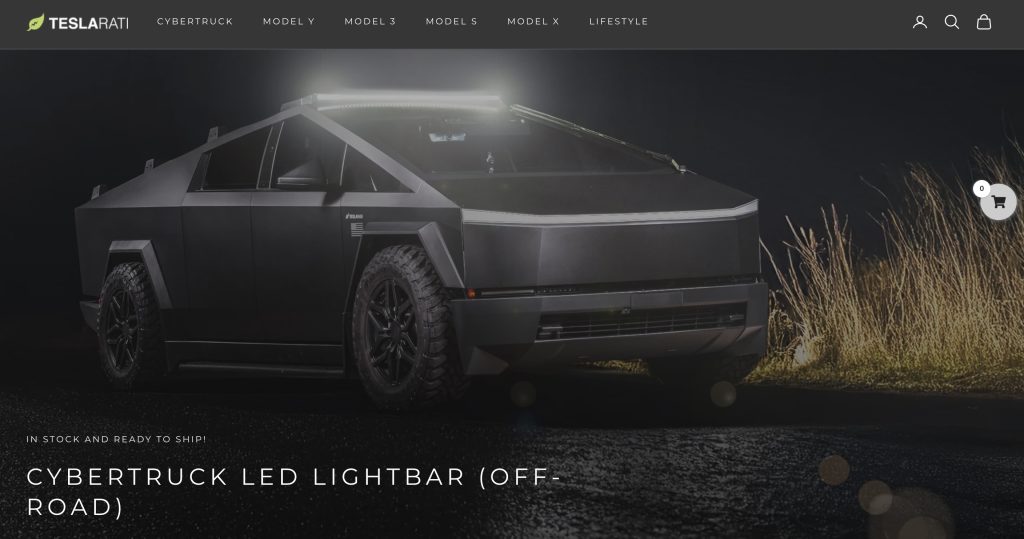

News
Lucid Gravity order page goes live, starts at $95k and tops out at $126k fully loaded
Lucid Motors has gone live with the configurator of its latest vehicle, the Gravity SUV. As can be seen on the vehicle’s order page, the Lucid Gravity is currently only available in its Grand Touring trim. The all-electric luxury SUV also starts at $94,900 and tops out at about $126,500 fully loaded.
The Lucid Gravity is the second vehicle in the luxury electric car maker’s lineup. Similar to the Lucid Air sedan, the Gravity SUV features a lot of range—over 440 miles per charge. It also features 828 hp of power and up to 120 cubic feet of cargo space depending on configuration. Being an SUV, Lucid also noted that the Gravity could comfortably seat seven adults if needed.
Lucid notes that the Gravity would come in two variants, with the base Touring trim being available to order from late 2025 at an estimated starting price of $79,900. For now, only the Gravity Grand Touring is available, which starts at $94,900. Lucid does not currently list the Gravity SUV’s estimated delivery date as of yet.
It's official. #LucidGravity ordering is now open.
Learn more and place your order for the game-changing SUV at https://t.co/xvBe3nYhpj.#LucidMotors #Technology #EV #ElectricVehicles pic.twitter.com/ap3syRMsYj— Lucid Motors (@LucidMotors) November 7, 2024
The Lucid Gravity is expected to compete with other premium all-electric SUVs in the market, such as the Tesla Model X and the Rivian R1S. With its starting price of $94,900, the Gravity Grand Touring is slightly more affordable than the Tesla Model X Plaid, which starts at $94,990. The Gravity is also more affordable than the Gen 2 Rivian R1S Tri, which starts at about $105,900. It remains to be seen, however, if the Lucid Gravity could be competitive against the Model X Plaid’s tech and power, or the Gen 2 R1S Tri’s off-road prowess.
The Lucid Gravity configurator is now live! I specced out how I’d do one…
Lots of little options that should be standard. No lane centering as standard? Heated steering wheel bundled into a $2,500 pack with a bunch of other stuff?
Idk… I was hoping for more standard equipment… pic.twitter.com/UqXVbcXL2v— Kyle Conner (@itskyleconner) November 7, 2024
Electric vehicle enthusiasts on social media have shown quite a bit of excitement for the Lucid Gravity, though EV veteran Kyle Conner from Out of Spec Studios observed that some rather basic features such as lane centering–which are found in affordable EVs like the Model 3–are bundled with optional packs in the Gravity.
Don’t hesitate to contact us with news tips. Just send a message to simon@teslarati.com to give us a heads up.
Teslarati has an aftermarket shop for your Tesla Cyber S3XY needs!
Check out our affordable Cybertruck Off-Road LED Lightbar!


News
Tesla FSD fleet is nearing 7 billion total miles, including 2.5 billion city miles
As can be seen on Tesla’s official FSD webpage, vehicles equipped with the system have now navigated over 6.99 billion miles.

Tesla’s Full Self-Driving (Supervised) fleet is closing in on almost 7 billion total miles driven, as per data posted by the company on its official FSD webpage.
These figures hint at the massive scale of data fueling Tesla’s rapid FSD improvements, which have been quite notable as of late.
FSD mileage milestones
As can be seen on Tesla’s official FSD webpage, vehicles equipped with the system have now navigated over 6.99 billion miles. Tesla owner and avid FSD tester Whole Mars Catalog also shared a screenshot indicating that from the nearly 7 billion miles traveled by the FSD fleet, more than 2.5 billion miles were driven inside cities.
City miles are particularly valuable for complex urban scenarios like unprotected turns, pedestrian interactions, and traffic lights. This is also the difference-maker for FSD, as only complex solutions, such as Waymo’s self-driving taxis, operate similarly on inner-city streets. And even then, incidents such as the San Francisco blackouts have proven challenging for sensor-rich vehicles like Waymos.
Tesla’s data edge
Tesla has a number of advantages in the autonomous vehicle sector, one of which is the size of its fleet and the number of vehicles training FSD on real-world roads. Tesla’s nearly 7 billion FSD miles then allow the company to roll out updates that make its vehicles behave like they are being driven by experienced drivers, even if they are operating on their own.
So notable are Tesla’s improvements to FSD that NVIDIA Director of Robotics Jim Fan, after experiencing FSD v14, noted that the system is the first AI that passes what he described as a “Physical Turing Test.”
“Despite knowing exactly how robot learning works, I still find it magical watching the steering wheel turn by itself. First it feels surreal, next it becomes routine. Then, like the smartphone, taking it away actively hurts. This is how humanity gets rewired and glued to god-like technologies,” Fan wrote in a post on X.
News
Tesla starts showing how FSD will change lives in Europe
Local officials tested the system on narrow country roads and were impressed by FSD’s smooth, human-like driving, with some calling the service a game-changer for everyday life in areas that are far from urban centers.

Tesla has launched Europe’s first public shuttle service using Full Self-Driving (Supervised) in the rural Eifelkreis Bitburg-Prüm region of Germany, demonstrating how the technology can restore independence and mobility for people who struggle with limited transport options.
Local officials tested the system on narrow country roads and were impressed by FSD’s smooth, human-like driving, with some calling the service a game-changer for everyday life in areas that are far from urban centers.
Officials see real impact on rural residents
Arzfeld Mayor Johannes Kuhl and District Administrator Andreas Kruppert personally tested the Tesla shuttle service. This allowed them to see just how well FSD navigated winding lanes and rural roads confidently. Kruppert said, “Autonomous driving sounds like science fiction to many, but we simply see here that it works totally well in rural regions too.” Kuhl, for his part, also noted that FSD “feels like a very experienced driver.”
The pilot complements the area’s “Citizen Bus” program, which provides on-demand rides for elderly residents who can no longer drive themselves. Tesla Europe shared a video of a demonstration of the service, highlighting how FSD gives people their freedom back, even in places where public transport is not as prevalent.
What the Ministry for Economic Affairs and Transport says
Rhineland-Palatinate’s Minister Daniela Schmitt supported the project, praising the collaboration that made this “first of its kind in Europe” possible. As per the ministry, the rural rollout for the service shows FSD’s potential beyond major cities, and it delivers tangible benefits like grocery runs, doctor visits, and social connections for isolated residents.
“Reliable and flexible mobility is especially vital in rural areas. With the launch of a shuttle service using self-driving vehicles (FSD supervised) by Tesla in the Eifelkreis Bitburg-Prüm, an innovative pilot project is now getting underway that complements local community bus services. It is the first project of its kind in Europe.
“The result is a real gain for rural mobility: greater accessibility, more flexibility and tangible benefits for everyday life. A strong signal for innovation, cooperation and future-oriented mobility beyond urban centers,” the ministry wrote in a LinkedIn post.
News
Tesla China quietly posts Robotaxi-related job listing
Tesla China is currently seeking a Low Voltage Electrical Engineer to work on circuit board design for the company’s autonomous vehicles.

Tesla has posted a new job listing in Shanghai explicitly tied to its Robotaxi program, fueling speculation that the company is preparing to launch its dedicated autonomous ride-hailing service in China.
As noted in the listing, Tesla China is currently seeking a Low Voltage Electrical Engineer to work on circuit board design for the company’s autonomous vehicles.
Robotaxi-specific role
The listing, which was shared on social media platform X by industry watcher @tslaming, suggested that Tesla China is looking to fill the role urgently. The job listing itself specifically mentions that the person hired for the role will be working on the Low Voltage Hardware team, which would design the circuit boards that would serve as the nervous system of the Robotaxi.
Key tasks for the role, as indicated in the job listing, include collaboration with PCB layout, firmware, mechanical, program management, and validation teams, among other responsibilities. The role is based in Shanghai.
China Robotaxi launch
China represents a massive potential market for robotaxis, with its dense urban centers and supportive policies in select cities. Tesla has limited permission to roll out FSD in the country, though despite this, its vehicles have been hailed as among the best in the market when it comes to autonomous features. So far, at least, it appears that China supports Tesla’s FSD and Robotaxi rollout.
This was hinted at in November, when Tesla brought the Cybercab to the 8th China International Import Expo (CIIE) in Shanghai, marking the first time that the autonomous two-seater was brought to the Asia-Pacific region. The vehicle, despite not having a release date in China, received a significant amount of interest among the event’s attendees.








